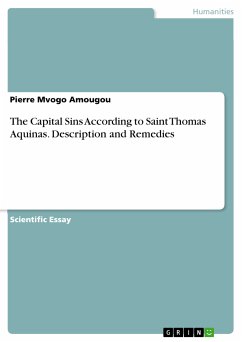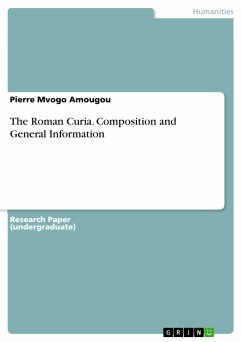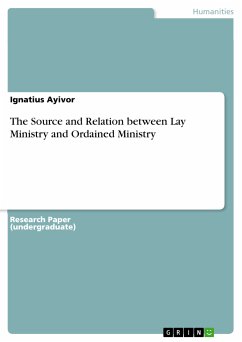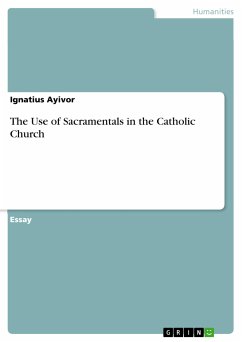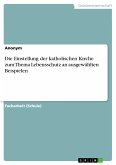Scientific Essay from the year 2019 in the subject Theology - Miscellaneous, grade: note, , course: Spiritual Theology, language: English, abstract: The following essay aims to give an overview of the capital sins as listed by Saint Thomas Aquinas and its respective remedies. God has given us free will, reason, and a sense of responsibility. We are to use these gifts to live by His law. Sinning is what we do when we use our gifts of reason and free will in deviation from God's law. Then, the seven capital sins are perilous tendencies which threaten the life of charity and the grace of God within us. It is seen as the roof of all sin, and John terms it to be "the lust of the flesh and the lust of the eyes, and the pride of the life" (1 Jn 2:16). Capital sins therefore are disruptions of natural tendencies that are required for our human flourishing and happiness. Since the time of Pope Saint Gregory the Great (who lived from 540 to 604 AD) the Catholic Church has maintained that there are seven capital sins, also referred to as the seven mortal sins, seven deadly sins, or seven capital vices. Mortal sin refers to sin, due to action and intention, which is of a graver nature than venial sin. Where venial sin is relatively minor, mortal sin creates the threat of eternal damnation, a full turning away from God on the part of the sinner, unless absolved of the sin. In the early centuries of the Church, the formal list of the capital sins took a few different forms. The earliest predecessor to the list that has been accepted for the past millennium was penned in the 4th century by a monk named Evagrius Ponticus, who listed eight "evil thoughts." Seven of these evil thoughts were first listed formally by Pope Gregory the Great and later were enumerated by Thomas Aquinas in the Summa Theologiae. Since that time, theologians have retained the list. What are therefore these seven evil thoughts or capital sins all about?
Dieser Download kann aus rechtlichen Gründen nur mit Rechnungsadresse in A, B, BG, CY, CZ, D, DK, EW, E, FIN, F, GR, HR, H, IRL, I, LT, L, LR, M, NL, PL, P, R, S, SLO, SK ausgeliefert werden.

